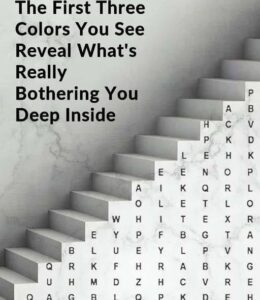The First Three Colors You Notice Reveal the Weight You Carry

What do the first colors that catch your eye say about you? According to psychology and cultural tradition, they may reveal hidden emotions, personal struggles, and even the healing your spirit is quietly asking for.
-
Blue often represents emotional depth, longing, sadness, or the need for renewal.
-
Purple signals inner transformation, spiritual searching, or unresolved conflict.
How Colors Speak to the Mind
Colors aren’t just visual—they touch our emotions in several ways:
-
Memory links — shades remind us of past experiences.
-
Subconscious influence — we feel drawn or repelled without knowing why.
-
Brain responses — color-sensitive regions affect hormones and mood.
The Cultural Lens
Color meanings shift across societies. In the West, white represents purity, while in parts of Asia it’s linked to mourning. Red brings luck in China but danger in Western culture. These differences show how deeply context shapes perception.
Using Color for Self-Discovery
You can use color as a mirror for your inner world:
-
Pay attention to the colors that stand out to you.
-
Ask yourself what emotions they stir.
-
Write or create art to explore those feelings.
-
Incorporate colors into therapy, meditation, or mindfulness practices.
Science Meets Spirit
Modern research is uncovering surprising connections between color and emotional health. Studies show that:
-
Mindfulness increases awareness of how color influences mood.
-
Exposure to certain hues can affect hormone levels.
-
New tools in AI and augmented reality are being designed for personalized color therapy.
Development, Genetics, and Trauma
Our relationship with color starts early—infants recognize hues before they can speak. Genetics plays a role too, influencing how we perceive shades and the emotions they trigger. In trauma therapy, colors can either soothe or stir memories, making them powerful tools for healing.

A Global Perspective
From Aboriginal traditions that view colors as spiritual energies to Tibetan meditation practices that use color as a pathway to clarity, cultures worldwide have long believed in color’s ability to shape consciousness. Even language itself determines how we categorize and respond to colors.
Conclusion: Listening to Color
Colors form a dialogue between the outer world and our inner lives. They can expose the burdens we carry, inspire change, or offer comfort. Every shade that draws your attention is a message—an invitation to pause, reflect, and uncover what your subconscious is trying to say.